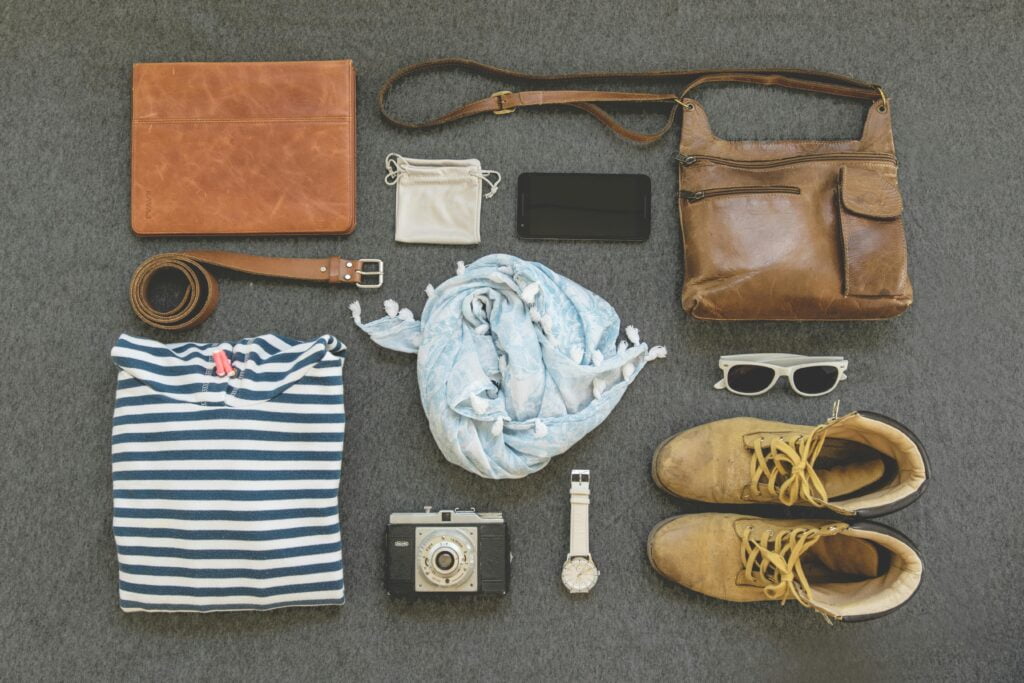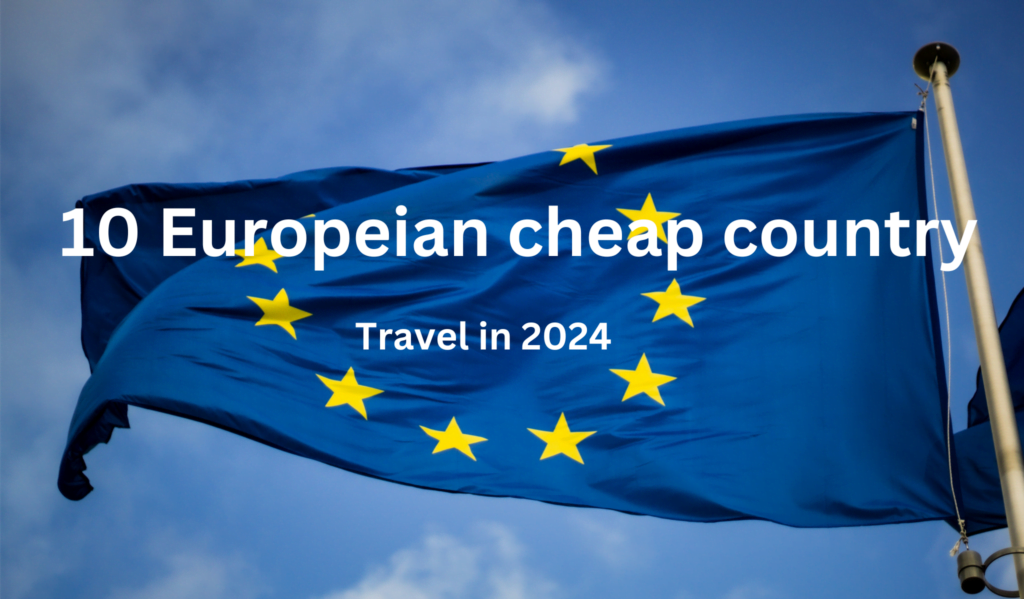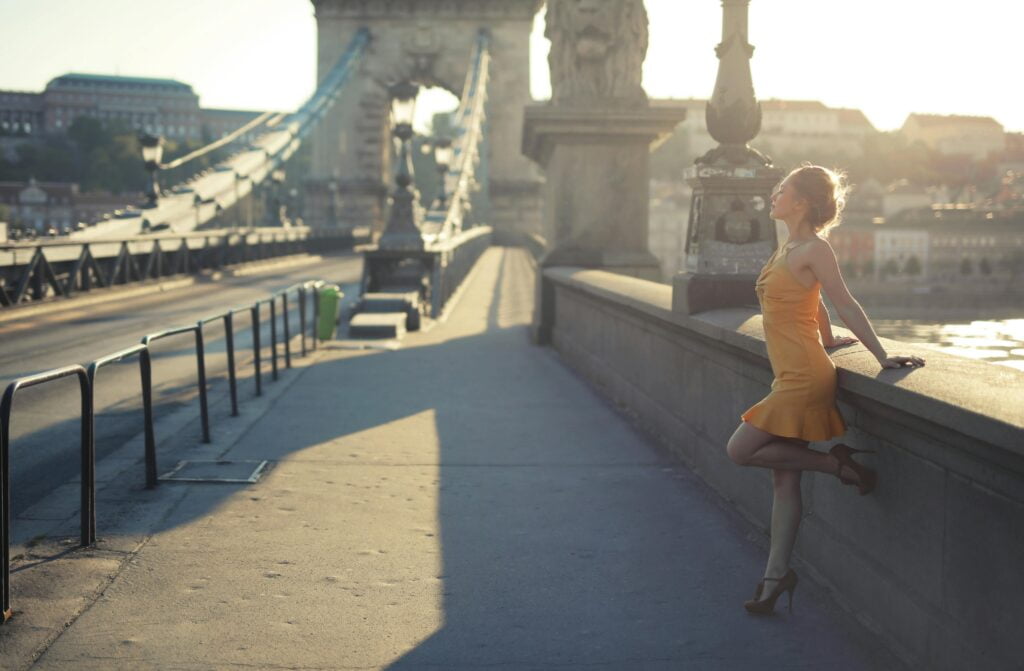Is packing for a trip to Europe can be unexpectedly tricky? There are several key mistakes you want to be sure to avoid. In this blog, I’ll cover some of the most common packing mistakes many people make when traveling to Europe
I have traveled extensively throughout Europe, and I’ll be honest with you—I have seen and made my fair share of packing mistakes. If you’re confused or overwhelmed about what to pack or how to pack, I made this video just for you. We’ll cover a couple of things like what bag not to bring, what not to wear, what not to buy, and what not to forget. Okay, so dive in.
Mistake #1- Bringing the wrong bag.
mistake number one is bringing the wrong bag. And the wrong bag is a giant roller bag, a.k.a. huge checked suitcase. There is almost no reason to bring a giant suitcase with you on your trip to Europe. Most people, when they travel to Europe, are planning to visit multiple cities and typically do that via rail or by taking a bus or even inexpensive short-haul flights. The right bag for your European adventure is going to be one that makes it easy for you to do those things. The right bag is going to be lightweight, portable, and one that’s easy for you to manage. Picture walking a mile with that bag if you had to—that’s not uncommon. Picture the bag that is going to make it easy for you to step up onto a train platform and that you are physically capable of managing. When it comes to flights, there’s not one international standard when it comes to carry-on bag sizes; however, 22 inches by 14 inches by 9 inches is pretty common, so you should be safe if you’re under that. One difference you’ll see in Europe, though, that is not as common in the USA, is weight restrictions for your carry-on bag. In general, that’s going to be somewhere between 7 to 10 kg, which is between 15 and 22 pounds. This varies highly by airline, so please do your research at that time. If you’re the kind of person that’s used to just throwing yourself in a bag and thinking, “Hey, as long as it’s under 50 pounds, I’m good,” and now you’re freaking out, depressed, I’m going to share two Europe luggage strategies and one of my favorite travel hacks. I recommend you choose one of these two Europe luggage strategies, and then the travel hack is something I recommend everyone do.
One bag traveler.
Strategy number one is the one bag traveler. If you can pare down your belongings to fit into one bag—which, trust me, you can—my top recommendation is always going to be a backpack. A big benefit of using a backpack is that you can go hands-free, and in Europe, in particular, much of where you will be walking, especially if you’re in an Old Town, it’s going to be cobblestones and uneven terrain that sometimes can be tricky with wheels. When you hear “Europe” and “backpack” in the same sentence, I’m not sure what comes to mind, but I know for me, initially, what came to mind was one of those giant top-loader backpacks that looks like an entire campsite could fit in there. That is not what we’re talking about. What I recommend is a sensible, lightweight bag that comfortably fits what you need for a trip to Europe and easily meets the carrier requirements.
There are a lot of great options out there, so many good brands in this space. Tortuga makes a great one, Peak Design has a great one that I almost bought, my all-time personal favorite that I’ve used several different times on various trips to Europe is the Osprey Porter 46. By the way, this is not sponsored in any way. What I love about this Osprey bag is that it’s roomy, has a dedicated area for your laptop, and other tech. It works beautifully with packing cubes and has this awesome quick-access stuff pocket, which is perfect for emptying your pockets into when you go through security. It also has these compression straps that help cinch things down. Now, one thing to watch out for with this bag in particular, and trust me, I’ve learned from personal experience, is don’t overstuff it. If you do, you may struggle with the overhead bins on very small planes. But if you don’t overstuff it, trust me, you’ll know when you’ve overstuffed it, it’s not a problem at all. Ultimately, if you’re going the backpack route, choose a bag that is durable, offers some level of water resistance, gives you options for compartmentalization, organization, and very, very key, it fits your body comfortably.
Two-bag traveler.
The next strategy is the two-bag traveler. I’ve done this one as well. This is for you to bring a carry-on size roller bag and a personal item backpack. Ali and I actually used this exact setup for six months of full-time travel. So for roller bags on that trip, we both used the Monos Carry-On Plus. Lately, we’ve been testing out some bags from Level8 Cases. I’m actually considering making a comparison video breaking down the differences between several of the major carry-on roller bags out there. If you would be interested in seeing that, comment “clamshell” below. For our personal item backpacks, I used the Peak Design 20L Everyday Backpack to haul all our camera gear around in, and Ali used the Transit Backpack from Everlane. So key things to look out for in a personal item bag are that they fit under the airplane seat, there’s a pocket for a water bottle, they offer some level of water resistance, and there’s a trolley sleeve or handle pass-through so that they can sit on top of your roller bag.
Here’s a quick travel hack:
Whether you’re a one-bag or a two-bag traveler, pack a foldable daypack. A daypack is a small, lightweight, and usually inexpensive backpack that packs down really small, usually into an inner pocket, and can be stored in your main bag until you need it. Then, when you’re in the middle of your trip, you can leave your big bag in the room and take this little one out with you for the day. You can store things in there that you would need, like your sunglasses, your rain jacket, water bottle. It’s separate from your main bag, it’s really inexpensive, and it packs down smaller than the palm of your hand.
Mistake #2- Clothing.
The next mistake revolves around clothing, and the biggest clothing-related mistake is simply bringing too much clothing. And the best way to avoid bringing too much clothing is by making a plan. I remember explaining for the first time to one of my friend, how to pack for a 10-day European trip and just how daunted she was by the premise of having to be so intentional and methodical about exactly what to bring. She did and she didn’t drink, and so here’s a few quick tips for you, avoiding clothing that is superfluous and could be used in a variety of scenarios. Try to create a mini capsule wardrobe for your trip so that your tops and your bottoms can mix and match and work in a number of different ways. I also recommend leaning towards lightweight clothing items and packing as if you’ll dress in layers. You could also seek out items that have moisture-wicking properties in case you’re traveling during summer.
How many wears you can get
You should also consider how many wears you can get out of a given clothing item. For example, you probably only need one, maybe two pairs of pants for a week-long trip. Maybe that’s not such a foreign concept, but what about things like your socks and your shirts? You probably don’t need a different pair of socks for every single day of your trip. As you begin thinking about items that could be re-worn and reused, I highly suggest merino wool. Merino wool has antimicrobial properties which will help your clothing resist odor.
Wrinkle resistance clothes
Finally, consider wrinkle resistance. If you’re folding or rolling your clothes, chances of wrinkles go way up. So consider maybe not bringing those things that get wrinkled really easily, and if appropriate, use Downy Wrinkle Release spray or something similar. We always have a travel-sized bottle of this with us, and it works. It is super clutch. The best way not to overpack is to use a packing checklist, and when anyone is for you, you can get it. If you’re getting value out of this video, please give it a thumbs up so YouTube will notice and suggest it to other travelers like you. A big mistake when traveling to Europe is bringing the wrong kind of clothing. Unless you’re going to some very fancy places, you don’t need to super-duper bring anything nice.
Mistake #3- Wrong kind of clothing.
It’s a big mistake when traveling to Europe is bringing the wrong kind of clothing. Unless you’re going to some very fancy places, you don’t need to bring anything super-duper nice. Now, I’m not saying ladies don’t bring a dress or guys don’t bring a nice button-up shirt. Don’t get me wrong, we love going out to a nice dinner, and you know I’ll bring something like this, usually with sleeves. Leave the evening gown and the suit jacket at home. On the complete opposite end, don’t dress like a slob. Your pants are, in general, pretty stylish, and look, I’m not trying to say you’ve got to blend in, but there are certain things you wear that will identify you as a tourist, a.k.a. target for scams, pickpockets, etc. These are some things you may want to consider avoiding. And look, I’m no fashion expert—I mean, look at me, come on—but I’ve seen this a lot. University apparel, you know, those big university sweatshirts, sandals with socks. I mean, come on, these look kind of silly anywhere. And it’s those dorky zip-off pants, you know, the ones that are like, they’re pants, no, they’re shorts. And just a note, certain sights like churches may have modesty requirements. Now, I’ve been to several that are honestly pretty lax about this, but some of them are kind of weird about guys wearing shorts or ladies having their shoulders exposed. Before you go, just do your research ahead of time. You would hate to not be able to visit a site that you really want to because of what you’re wearing.
About Shoes.
Okay, well, we’re on the topic, here’s a couple of comments about shoes. When it comes to shoes, less is better. Ideally, one pair of shoes. I know, I know, this stuff, this was really, really tough for Ali, but in the end, you need one good pair of versatile, comfortable walking shoes that could work in a variety of situations. Ones that look fine as you’re out about walking around for the day or ones you’re good with whatever you’re going to wear to dinner. I recommend you wear your biggest pair on the plane, and if you pack your smaller pair of shoes, leave items like heels and other things that are just in general single-use at home.
Mistake #4- Buy things that’s you don’t need.
It’s a mistake to buy things you don’t really need. On my first trip to Europe, I went all out on the walking and hiking aesthetic. If you’re not planning on doing a lot of hiking or outdoor stuff, there’s just no need to invest in all those fancy technical fabrics like Gore-Tex and all that stuff. I’m not saying don’t get a rain jacket or whatever, but man, you probably don’t need shoes and hiking poles and technical shirts and the best. Like, you just don’t. I invested in these heavy hiking shoes and didn’t go for a single hike. I mean, we walked a lot, but 100% of our trip was in cities. I have no idea what I was thinking. There was just no reason for that level of technical armor on my feet. They were bulky and heavy, and I could have gotten away with something a lot smaller, simpler, and cheaper.
Travel neck pillows
Okay, this is a hot take, but I would not invest in one of those travel neck pillows. They give me comfortable, for sure, and I’ll make me wrong, most flights are going to offer you a pillow and a blanket on your long flight. Just remember, you’ve got to carry what you bring with you everywhere. I would not spend money on expensive camera equipment. Use what you have. Most smartphones today are amazing, especially if you’re new to photography or filming video. Use what you have. And I wouldn’t overinvest in guidebooks. Find one, maybe two trusted guides that you like for Europe. Rick Steves is pretty hard to beat. He’s the expert, he’s been doing it for a long time, and then fill in the rest with travel blogs, better like this one, to supplement your knowledge.
Mistake #5- Forgetting something important.
A huge mistake when traveling to Europe is forgetting something important that you need. So here are a few crucial things you want to be sure not to forget. First and foremost, don’t forget your passport. You probably expect me to say that, but you know you’re not gonna get far without it. I always recommend making photocopies of your important documents like your passport, your driver’s license, maybe your travel insurance, your itinerary, just certain things like that, and keeping a copy buried deep somewhere in your bag. Also take picture all documents and mail it yourself, that’s the full prof plan.
A huge thing you don’t want to forget when you travel to Europe is the right travel adapter. There’s a ton of options out there, but my all-time favorite is the universal adapter by Epica. I reviewed it and it works on a number of continents and countries. It definitely works in Europe, and it’s got enough ports to charge 6 devices. It’s incredibly highly reviewed on Amazon, and it’s right around 20 USD. Another thing you definitely don’t want to forget is to download the right apps before your trip.
And in this blog, I give a comprehensive review of 8 must-have travel apps you need to download before your next international trip. Thanks so much for Reading. See ya!





